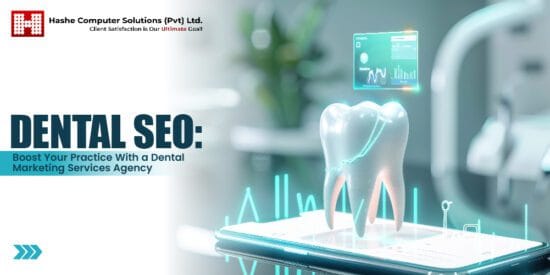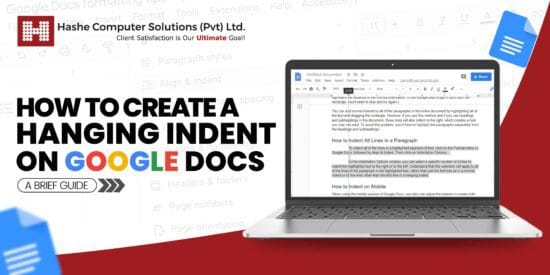
The words you enter into search engines affect how quickly you find a blog or website. The same goes for how people find your website. Understanding keywords, why they are crucial, and the best ways to find them is essential if you want people to find your website.
A keyword is a word or phrase that appears in the text of your web pages and closely resembles the words and phrases consumers enter into search engines. The idea is to successfully engage with users during searches so that you rank higher in their organic search results based on relevancy. The keyword is the foundation of search engine optimization (SEO).
You may produce and optimize content to address their query by finding out what words or phrases your target audience employs to search for your product or service. It’s critical to rank for keywords associated with your business so that users who find your website can access the information they need.
Respond to search queries with keywords.
The search query is the input, and the search results are the output when using a search engine. A user enters a specific word or phrase into a search engine, which is known as a search query (or search term).
The content of any particular web page may be a relevant search result for any different search query variations. That is why marketers employ keywords to optimize in a way that is beneficial to both searchers and businesses. Keywords are words or phrases in the text of your web pages that match the words and phrases as nearly as possible to that the users enter into search engines.
Keywords enable you to create a relevant and measurable SEO plan based on specific target phrases.
Understand the path a search query takes
The search term a user enters might reveal much about their knowledge of your company, if any. Additionally, it can indicate where they are in their conversion process.
The user doesn’t know where to begin while looking for a solution because they have no predetermined course. As they pass through the funnel, they become more aware. They eventually settle on a set of solutions to consider and decide on the type of solution they require. After researching potential suppliers, they create a list in their minds of factors to take into account and start weighing their alternatives. They ultimately decide to make a purchase and work with a particular supplier.
You can produce content to hold users’ interest at each level if you understand the paths the consumers take to become your customers.
Why keywords matter
You may effectively target your content by identifying keywords that match the client’s needs at various phases. You must first understand the significance of keywords to your company before you can take this action.
All website optimization that you perform on it begins with keywords. They are the result of your investigation, the cornerstone of your plan, and one of the most significant indicators you may use to gauge success.
The procedure is quite simple:
- Identify keywords.
- Optimize your website for keywords.
- Keep track of conversions, traffic, and keyword rankings.
Over time, you’ll refine your content with new target keywords as you iterate this process.
Prioritize your keywords.
In SEO, keywords are what you want to rank for since, in theory, higher rankings should increase relevant traffic.
However, some keywords have a higher search volume than others, which means they have a greater chance of generating more visitors. Some keywords will correspond to users who are much further down the sales funnel, resulting in underlying intent that is more purchase-driven and users who are more likely to convert (that is, take the desired action).
It’s critical to consider search volume and user intent when choosing keywords. Search volume is self-explanatory; it estimates how many individuals will search for a specific keyword.
Consider Searcher Intent
When someone types in a search query, their intent relates to what they were seeking. It has four main categories.
- Informational Intent: The user is merely trying to find out more details, learn more about a subject, or find a solution to a specific query.
- Navigational Intent: The user typically has a general idea of where they want to go or is looking for a particular web page and is aware of the website they are looking for.
- Transactional Intent: The user is looking with the intent to buy soon.
- Commercial Intent: The user is searching with the intent to buy but not quite yet, and they are conducting research before making a buying choice.
When you consider the user’s core search intent in the context of the customer journey, you can see how it evolves as they progress through the funnel. You can use this to map the data to your desired keyword phrases. You can start prioritizing the content using this data.
How to find the best keyword?
You must conduct keyword research before choosing the keywords for your website’s content. It’s a crucial stage in search engine optimization.
As with other areas of SEO, the more competitive your market, the more time and attention you’ll need to put into keyword research. However, even with a simple strategy, you’ll see benefits for newly launched websites or even those new to SEO.
Basics of keyword research
Always begin your keyword research by understanding the goal of your website and company. It included the categories of products and services you offer and the terminology you employ to describe them.
List the main subjects that relate to your business. Start by considering a wide range of ideas, such as the five to ten interests or needs that your business brings to mind. These might line up, for instance, with the pages of your website if you already have one.
If you don’t already have one, you might get ideas by visiting your competitor’s websites and networking with potential clients. Ask about the phrases and words they look up on search engines. You can do your research with numerous free SEO keyword research tools.
Aside from search volume, it’s critical to understand what Google returns as search results for a particular keyword in a search query. Although there are other search engines, SEO best practices usually concentrate on Google’s algorithm. A search engine results page (SERP) displays the search results.
You may determine whether the SERPs for the terms you want to rank for accurately reflect the kind of products or services you provide. By looking at Google’s interpretation of the intent, you can also determine whether it is informational, navigational, transactional, or commercial.
Knowing the long tail
Search volume isn’t the only factor to consider when analyzing keywords. The motive behind each search is also crucial.
You can define searches in three ways:
- Fat head: Phrases of one or two words with a more general intent
- Chunky middle: Two- or three-word phrases with more precise intent
- Long tail: Phrases of two, three, or four words (or longer) with a more focused intent.
Generally, when choosing target keywords, you should completely disregard the fat head. Larger businesses with the financial means to invest heavily in SEO typically dominate these keywords. Focus on long-tail or chunky middle keywords instead. If you optimize your content around middle keywords, you will often rank for some associated long tail keywords.
Adapting keywords to content
In some ways, your website content and information architecture decide your keyword approach. When conducting keyword research, you may find terms you want to target but haven’t got any existing content that fits. You’re also likely to discover keywords relevant to the present site configuration.
Long tail keywords are appropriate for product pages on e-commerce sites, while chunky middle keywords work well for pages devoted to a category or subcategory of what you sell. The primary keyword for product pages should frequently be the product name alone.
It seems reasonable to allocate target keywords to current pages and prepare new content (such as blog posts or new subcategories) for additional high-value keywords.
You can target multiple keywords by doing this for each section or subject your website covers, one for each URL that already exists on your site. This process of mapping keywords enables you to create a more specific approach with quantifiable outcomes. You may assess whether a particular page and its content are doing as you anticipated with each attempt to rank for a keyword.
Wrapping Up!
Defining keyword targets is critical for later stages of SEO implementation. Before you begin optimizing, you must identify your business’s main keywords and phrases.
Hashe is a leading digital marketing company that can help you with your digital marketing initiatives. Our digital marketing and SEO experts implement exceptional strategies to help your business grow. Contact us today for our top-notch digital marketing services!
Keep following us for more tech news! Check out our Social Media Pages
Was this helpful?
Last Modified: June 26, 2024 at 9:28 am
162 views















